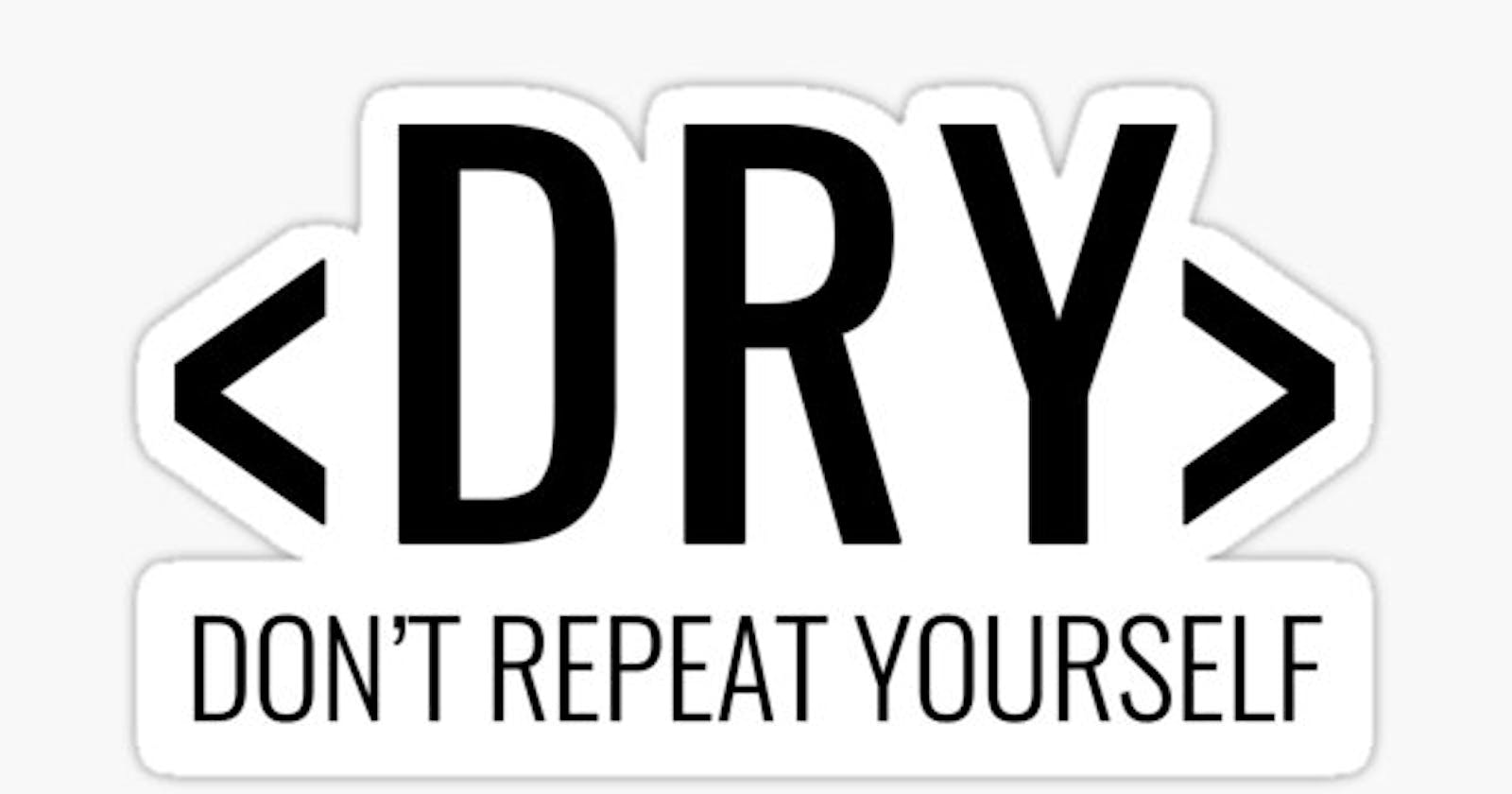Table of contents
No headings in the article.
As a developer, you've likely heard the term "DRY" being thrown around. DRY stands for "Don't Repeat Yourself," and it's a programming concept that advocates for code reusability and efficiency. In this blog post, we'll explore why a developer should follow the concept of DRY.
Firstly, following the DRY principle makes your code more maintainable. By avoiding repetition, you reduce the number of places you need to update if a change is required. For example, if you have a piece of code repeated throughout your program and you find a bug in it, you'll need to fix it in multiple places. With DRY, you only need to fix it once, and it will be reflected everywhere.

Secondly, DRY code is easier to read and understand. When code is repeated in multiple places, it becomes harder to understand the flow of the program. By following the DRY principle, you reduce redundancy and make it easier for other developers to understand your code. This can be especially helpful if someone else needs to work on your code in the future.
Thirdly, DRY code is more efficient. By reusing code instead of rewriting it, you save time and resources. It's also easier to test and debug because there are fewer places for errors to occur. This can lead to faster development cycles and more efficient use of resources.
Fourthly, DRY code can lead to the better code architecture. By identifying common patterns in your code, you can create abstractions that can be reused throughout your program. This can help to reduce complexity and make your code easier to manage and extend.
In conclusion, following the DRY principle is essential for developers who want to create efficient, maintainable, and scalable code. By avoiding repetition and maximizing code reuse, you can improve code readability, reduce errors, and save time and resources. So, next time you're writing code, remember to keep it DRY!
Sources: Cover Photo, Second Photo
